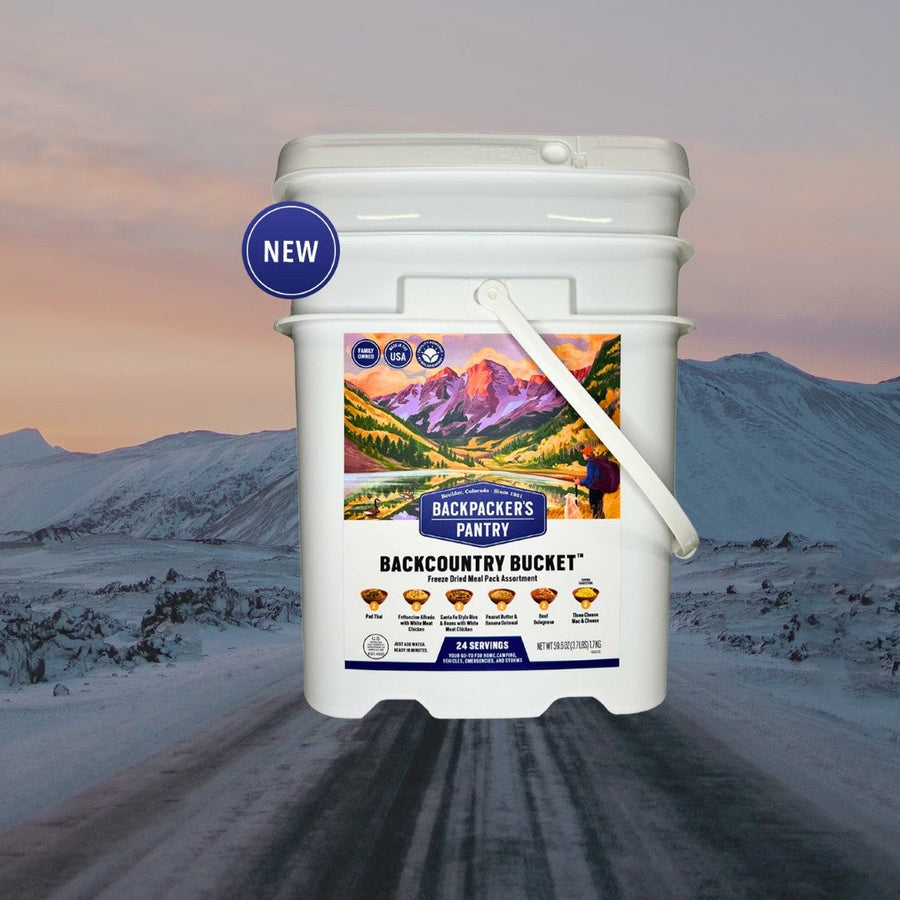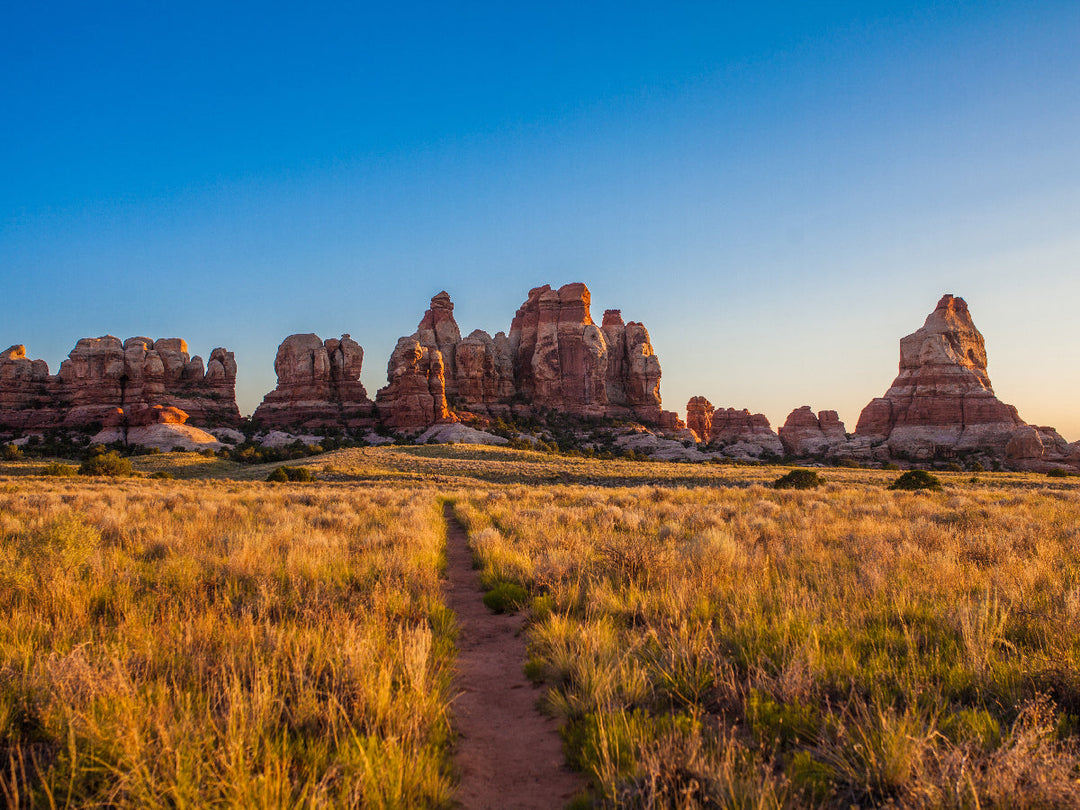Preventing and Dealing With Knee Pain While Hiking Downhill

Protecting Your Knees During Downhill Hikes
Knee pain is unfortunately one of the most common hiking injuries, and most hikers while experience knee pain at some point. Downhill hiking puts a lot of stress on your body, especially your knees. But don't despair, there are some specific steps you can take to prevent knee pain and reduce the risk of accidents. Here are some tips to help keep your knees safe and pain-free during your next downhill hike.
1. Prepare your body.
Like any physical activity, strength and flexibility can help keep you hiking and off the couch. What does this means for hiking specifically? Training the muscles around your knees can help protect them, like your quadriceps and glutes. This can help take the pressure off your knees. Lunges are a great way to strengthen both muscles, allowing you to increase strength, stability and stamina for lengthy downhill and uphill hikes on challenging terrain. Plyometric and balance exercises, similar to the workouts that you would do to train for skiing can be a great way to target stabilizing muscles, too. But strength is nothing without its counterpart flexibility. Yoga and regular stretching will help you prepare for long miles on the trail.
It's also important to maintain a healthy weight and to build up strength in your legs and core, which can help prevent knee pain while hiking. Consult your doctor or a physical therapist if you have ongoing knee pain, as it could be a sign of an underlying condition that needs treatment.

2. Take it slow.
Hiking downhill puts a tremendous amount of pressure on your knees. According to research appearing in the Knee Surgery, Sports Traumatology, Arthroscopy Journal, downhill hiking generates pressure amounting to 7 to 8.5 times your entire body weight. With this in mind, it's no wonder why so many outdoor enthusiasts experience knee discomfort after an extended downhill hike, especially if they moved too quickly. When hiking downhill, it's important to move slowly at a steady space to reduce pressure and make the hike more manageable for your body.
3. Relax and go with the flow.
It's natural for a hiker's stride to elongate when moving downhill. While overstriding is bad on level ground, it can help you resist the pull of gravity when moving downhill. With that said, if you find yourself moving too quickly, it's actually best to shorten and slow your steps to create a more natural stride. Working with the terrain can help you save energy and lessen impacts, too. Look for rocks and steps that can make your downhills less dramatic - by providing an intermediate step. In other words, make smaller steps down where the trail allows it.
4. Avoid leaning back.
While it may be tempting, you should avoid leaning back, since this can put you off balance and increase your risk of a fall. When hiking downhill, it's generally best to remain upright, keeping your torso over your hips and knees. If it helps, you can also lean slightly forward to improve stability. Whatever the case, be sure to keep your knees slightly bent with every single step.
5. Switchback.
If you are hiking on very steep slopes or loose gravelly surfaces, you should take a serpentine path by moving across the slope in a bit of a zigzag motion. This switchbacking technique is a common trail design intended to reduce steepness either downhill or uphill. If there is no such trail, you will have to generate the effect by angling across the slope for a few steps right, then a few steps left. However you decide to proceed, always use caution when moving downhill over loose surfaces, or you could lose your footing and suffer a dangerous fall.

6. Try trekking poles.
Although many hikers resist the idea of using trekking poles, there's no doubting their effectiveness when it comes to reducing knee pain on downhill hikes. Research has shown that trekking poles can help reduce the risk of knee pain by taking some of the impact off hikers as they move downhill. They also provide increased stability to help reduce the risk of falls and hyperextension of the knees. You can adjust the length of your trekking poles when you start a descent and then make the poles shorter for uphill hikes.
Dealing With Knee Pain While Hiking
Choose good footwear.
An awkward gait can put extra stress on your knees. If your shoes or boots hurt your feet, it is likely to affect your gait, especially if you are traversing rocky or uneven terrain. Ideally, your boots should fit firmly but comfortably, offering plenty of cushion to help absorb impact and relieve pressure on the joints. If you notice that your boots slip on the heel or cause back pain, you certainly want to replace them before you hit the trail.
Reduce the weight of your gear or your body.
It's tempting to overload your backpack with all sorts of non-necessities. Unfortunately, the heavier your pack, the more stress your knees will have to endure. Do your best to lighten your load by removing things you can live without. Instead of canned goods, opt for lightweight dehydrated meals. You should also carefully pack your gear in a way that will distribute the total weight more evenly.
Whatever the cause of your knee pain, symptoms tend to worsen when if you are overweight. Even losing a couple of pounds can make a huge difference for your joints. Before attempting especially challenging or long hikes, consider taking some time to get in better shape, so you can enjoy your adventure without experiencing excessive fatigue and pain.
Get some support.
If you have knee problems, consider wearing a comfortable brace that can help stabilize your leg. If you've recently had an injury or surgery, limit the distance and difficulty of your first few hikes, so you don't re-injure your knee. Research suggests you may also be able to substantially reduce the impact on your knees by using hiking poles.
Alter your diet.
Knee pain can also be the result of inflammation, which natural occurs as part of the body's healing process. According to Harvard Medical School, researchers have uncovered compelling evidence that we can reduce inflammation naturally by eating certain foods, including green leafy vegetables, olive oil, tomatoes, nuts, strawberries, fatty fish, blueberries, oranges and cherries. You may also be able to reduce your knee discomfort by taking a daily omega-3 fish oil supplement.
See an orthopedist.
Knee pain can result from an assortment of things, including muscle strains, tendonitis, sprains, cartilage tears, bursitis and arthritis. If you have a persistent ache beneath the kneecap, the cartilage might be worn down. On the other hand, sharp, shooting pains below or above the knee typically indicate tendinitis. Pain involving the entire knee or the back of the knee can indicate something more serious. A qualified orthopedist can help you determine the source of your knee pain. If surgery isn't required, you can alleviate discomfort using the RICE method (rest, ice, compression, and elevation). Over-the-counter NSAIDs can also help decrease pain and swelling after especially grueling hikes.





